► Dacia Spring tested in the UK
► UK’s cheapest proper electric car
► But is it a sensible purchase?
We have now driven the Dacia Spring in the UK. So I’m afraid I’m here to pour water on the fire of our earlier enthusiasm. But while this review carries my name, it builds on the experience of my colleagues and our aim is to deliver a well-rounded view of what’s being pitched as Britain’s ‘most affordable electric car‘.
The Spring certainly is cheap. Starting at £14,995, it significantly undercuts the likes of the Citroen e-C3 and Fiat 500e, and even costs less than the upstart Leapmotor T03. This makes it the cheapest electric car you can buy – discounting quadricycles such as the Citroen Ami – and one of the least expensive new cars of any kind. Quite the feat, and very Dacia.
For that money you get five doors, four seats and a surprisingly nice interior – including a boot bigger than the last Ford Fiesta. But you also get only 44bhp, 26.8kWh and a 140-mile driving range. You can spend another grand and get 64bhp, while the top-spec 64bhp Extreme variant tested here is £16,995. A price that includes a 10.0-inch infotainment screen, sat-nav, and vehicle-to-load so you can make a cup of tea in a layby when you get tired.
But what no amount of extra money will do for you is improve the Dacia Spring’s one-star Euro NCAP rating, nor the remarkable throwback that is the driving experience. Buckle in.
At a glance
Pros: low price is hard to ignore, decent interior, surprisingly big boot
Cons: one-star Euro NCAP rating, not nice to drive, feels every bit as cheap as it is
What’s new?
Dacia has shifted more than 150,000 Springs since its introduction elsewhere in 2021, and proudly claims that it’s the third best-selling EV to private buyers – all well and good but most electric cars are currently sold to companies. Well-intentioned zero-emissions enthusiasts have been calling for UK sales to make electric motoring more affordable here since its debut, but only after the introduction of what is a mid-life facelift model in 2024 has the steering wheel made it to the right-hand side.
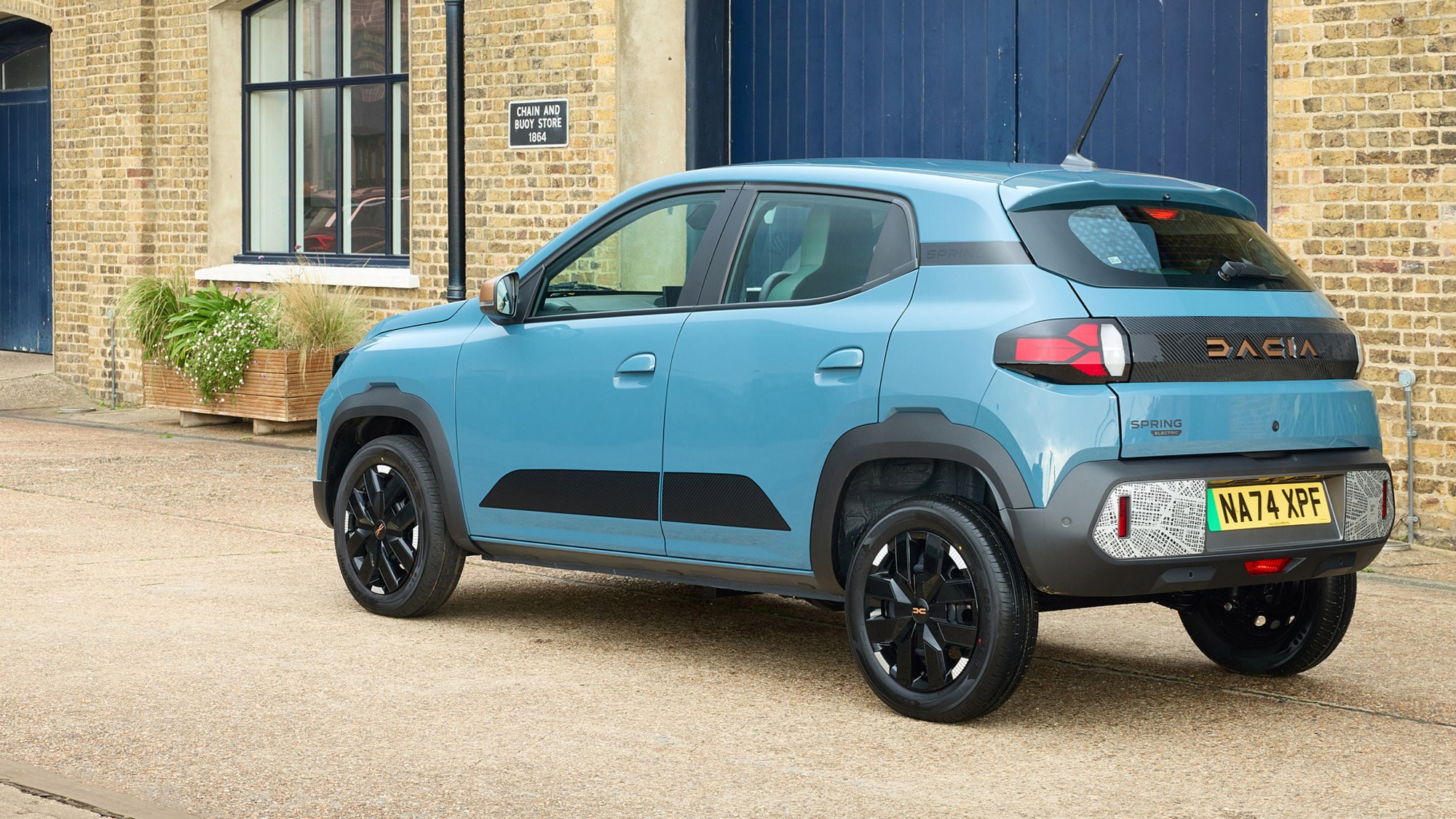
Part of the reason the Spring costs so little is that it’s built in China and based on a car that was originally designed for the Indian market. The Spring is a rebadged version of the electric Renault City ZE, a car that started out as the conventionally powered Renault Kwid in India. But it’s also cheap because it’s built that way – hence the small battery pack and flimsy doors. This does at least help to keep the weight down to under 1,000kg.
The only body panel carried over to the facelift from the old car is the roof. Much of the new design language inside and out is taken from the latest Dacia Duster, including the YouClip accessory mounts and the infotainment screen. The stickers on the bumpers that weirdly make it look like a prototype wearing a half-hearted disguise are intended to be easily replaced to hide knocks and scrapes. Something for used buyers to ponder.
What are the specs?
What hasn’t changed much about this facelifted Spring is what’s under the surface. There have, apparently, been tweaks to the electrically assisted steering, but the choice of 44bhp or 64bhp electric motor driving the front wheels carries over.
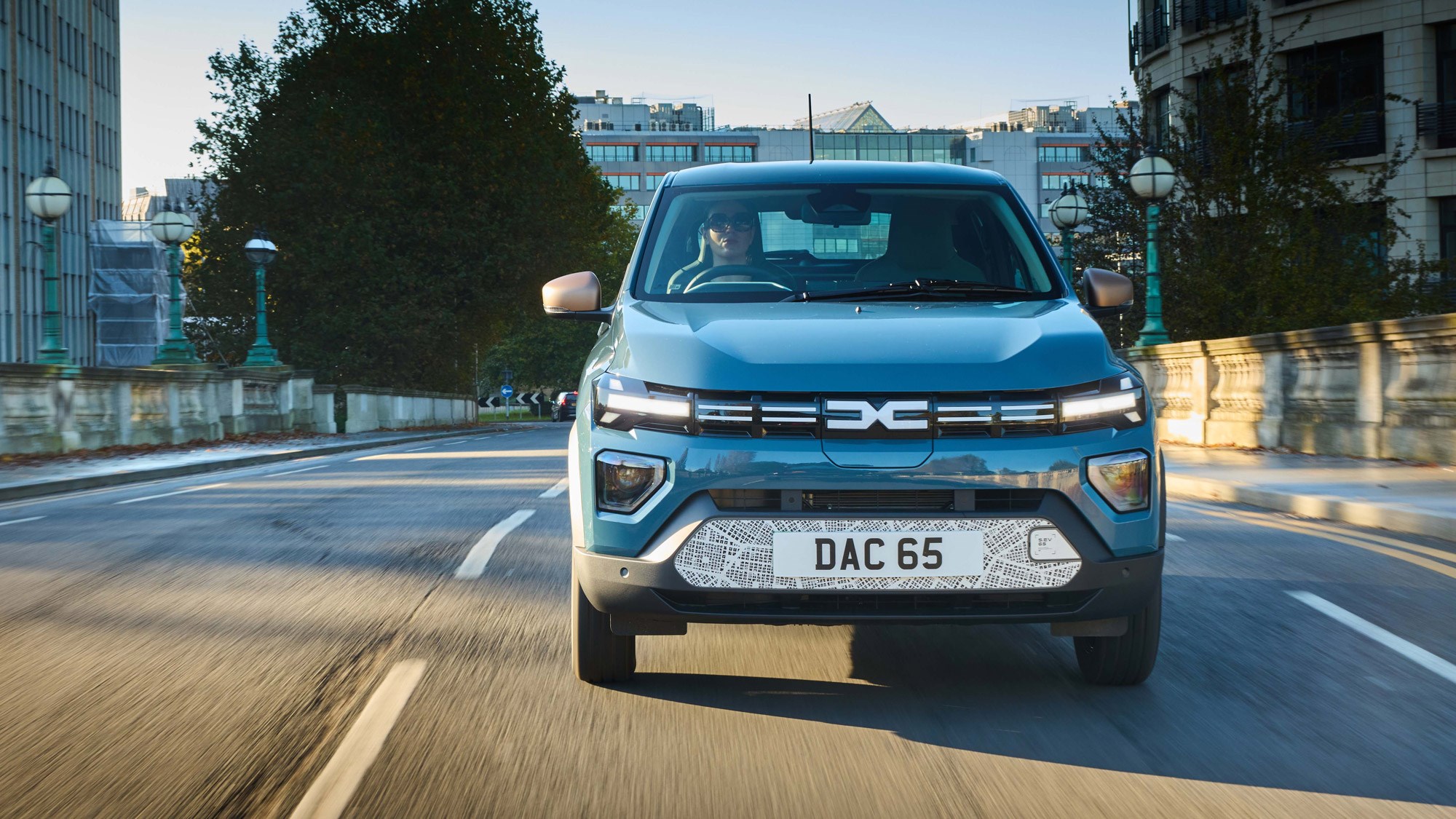
We have not yet tested the 44bhp model, which comes in entry-level Expression trim only and weighs just 976kg. But you’d best not be in a rush. The 0-62mph time is 19.1 seconds, and it takes six to reach 30mph. Top speed is the same 78mph limit as the more powerful motor. Eventually. Just 10 per cent of UK buyers are expected to choose life in the very slow lane.
Most will therefore go for the full 64bhp, with some 60 per cent of orders so far ponying up the maximum for the Extreme. While this feels faster than its claimed 13.7sec 0-62mph time thanks to the low weight (984kg) and the usual instant electric torque – it officially does 0-30mph in 3.9 – you still need to think ahead about overtaking and slip roads.
Range and charging
All Springs come with a 26.8kWh battery. Small by modern standards, but very right fit for the intentions behind this car. Dacia says that current Spring owners drive an average just 23 miles a day, and the WLTP rating for the car is 140 miles per charge. It’s aimed at those who do mostly local journeys.
Our experience of the Spring’s efficiency has been variable. In warm conditions driving in Bordeaux we saw an indicated five miles per kilowatt hour. That’s better than a Tesla Model 3, which is widely recognised – not least by our own testing – as a paragon of EV efficiency. However, driven with little sympathy on a mixture of very familiar autumnal UK roads we travelled 71 miles on a full charge and were left with just 14 per cent battery.
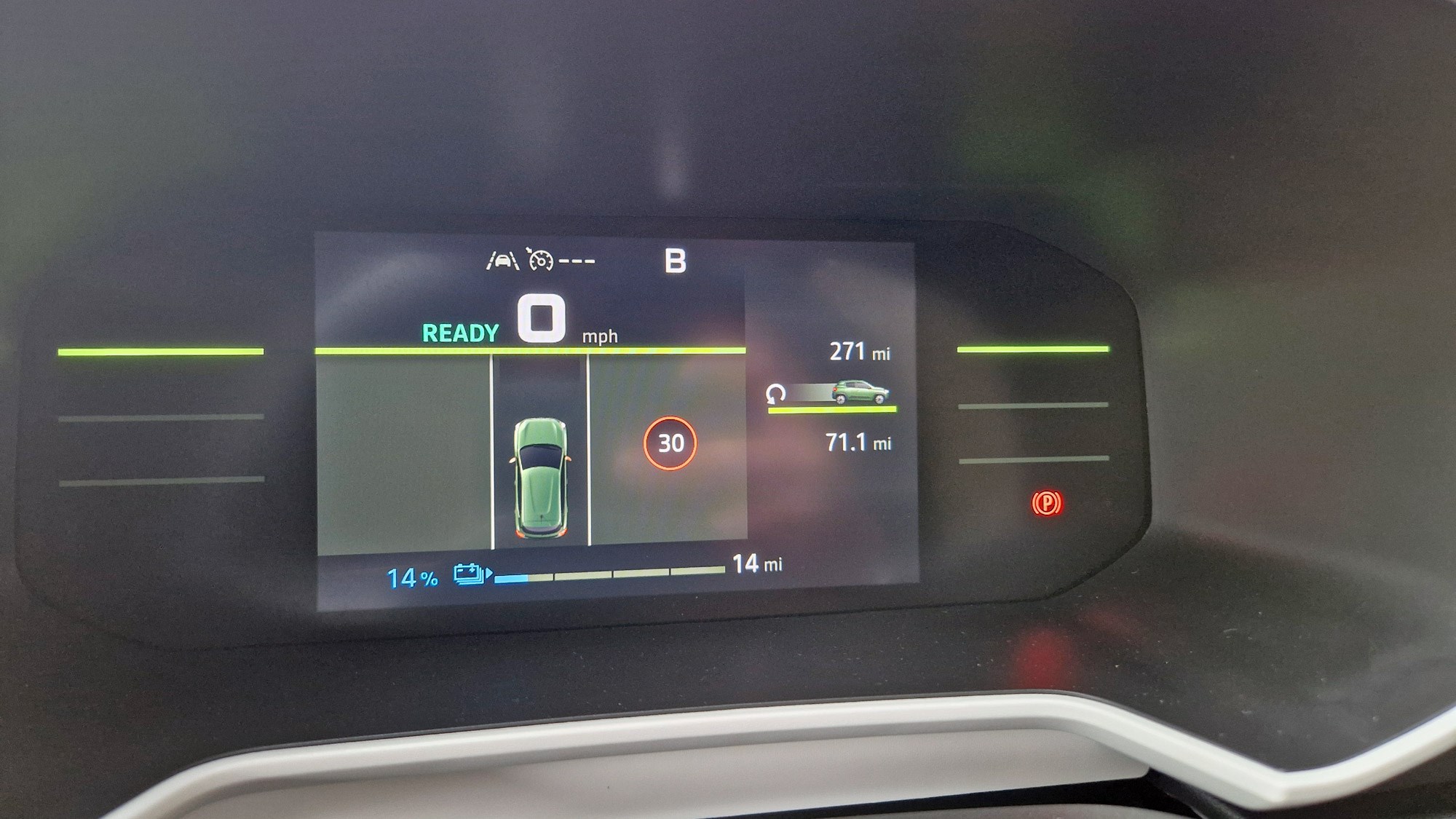
Stick to the city and you’ll likely easily top 100 miles per charge, perhaps even get close to that official figure of 140. Venture further afield and not only will higher speeds quickly take their toll, you’ll be hampered by DC public charging that tops out at just 30kW – a figure beaten by many of the best plug-in hybrids these days, let alone most full electric cars. It’s so slow that a 20-80 per cent charge will take 45 minutes despite the diddly battery.
You also need to buy the Extreme to get DC charging at all. Fortunately, the small size of the pack means even a three-pin plug will likely offer a useful overnight recharge on AC – Dacia quotes 10 hours 50 minutes for 20-100 per cent in this scenario. A 7kW home wallbox will do the same in four hours.
What’s it like to drive?
You can rant and rave all you like about the nannying interference of EU regulations and the increasing insistence of ever-more complex and annoying active safety equipment. You can also moan – as we have – about the busybodies at Euro NCAP damning brands such as Dacia for trying to keep brand new cars affordable.
But you might also want to watch the Spring crash test videos before agreeing with Dacia’s assertion that crashing better than a 2012 Renault Clio is acceptable for a car being introduced into the UK for the first time in 2024. Its one-star Euro NCAP rating in 2021 includes an alarming 49 per cent score for adult occupants (56 per cent for children, and just 39 per cent for vulnerable road users). This facelifted version has all the latest mandatory aids, but Dacia has previously told us it won’t be retested until 2027.
What it comes down to is: would you be happy putting your family in this car? And for me that answer was maybe yes, until I drove it.
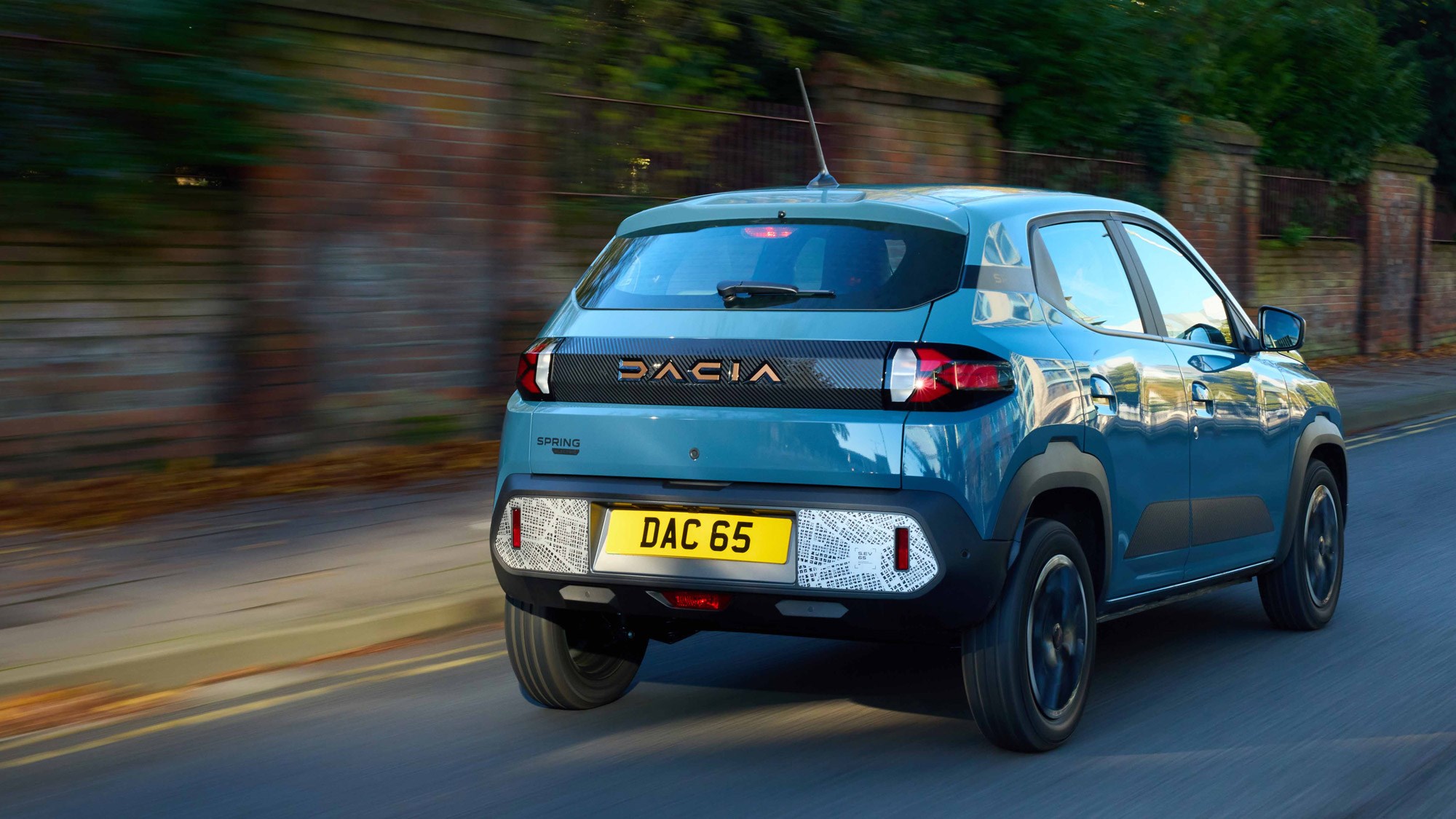
Around town, it’s basically fine. The 64hp means it nippy enough and the light steering makes easy work of parking. The 4.8m turning circle is also a plus point – u-turning within the width of some the roads near me being entirely feasible as a result – while the soft suspension is a clear effort to deliver comfort despite the constraints of a 2.4m wheelbase.
With the single-speed transmission and the promise of low running costs, I was merrily considering that it might just make the perfect replacement for my wife’s four-year-old Fiat 500 Dualogic. The extra set of doors would even be handy for slotting in the kids. Then I pitched it into the first countryside corner at more vigorous – but hardly bat out of hell – speed.
And pitched is the operative word here. The Spring’s natural inclination is to roll so far over in the direction of the outside front wheel that for an instant I was sure I was about to have a very embarrassing low-speed off. Fortunately, the initial inertia only carried me so far, but this was an immediate wake up call that this Dacia does not drive in the manner we’ve come to expect from modern vehicles.
The extent of the bodyroll combined with the total lack of information from the steering, exacerbated by the limited grip from Dacia’s choice of Linglong Eco Master tyres – which spin-up over mid-corner bumps let alone moderately damp surfaces – leaves you with a front end that just doesn’t turn in with any conviction at all. Get your entry speed really wrong and the back goes so light that you’ll soon be dealing with oversteer.
All of which is quite an interesting proposition for such a low-cost vehicle with such limited physical crash credentials.
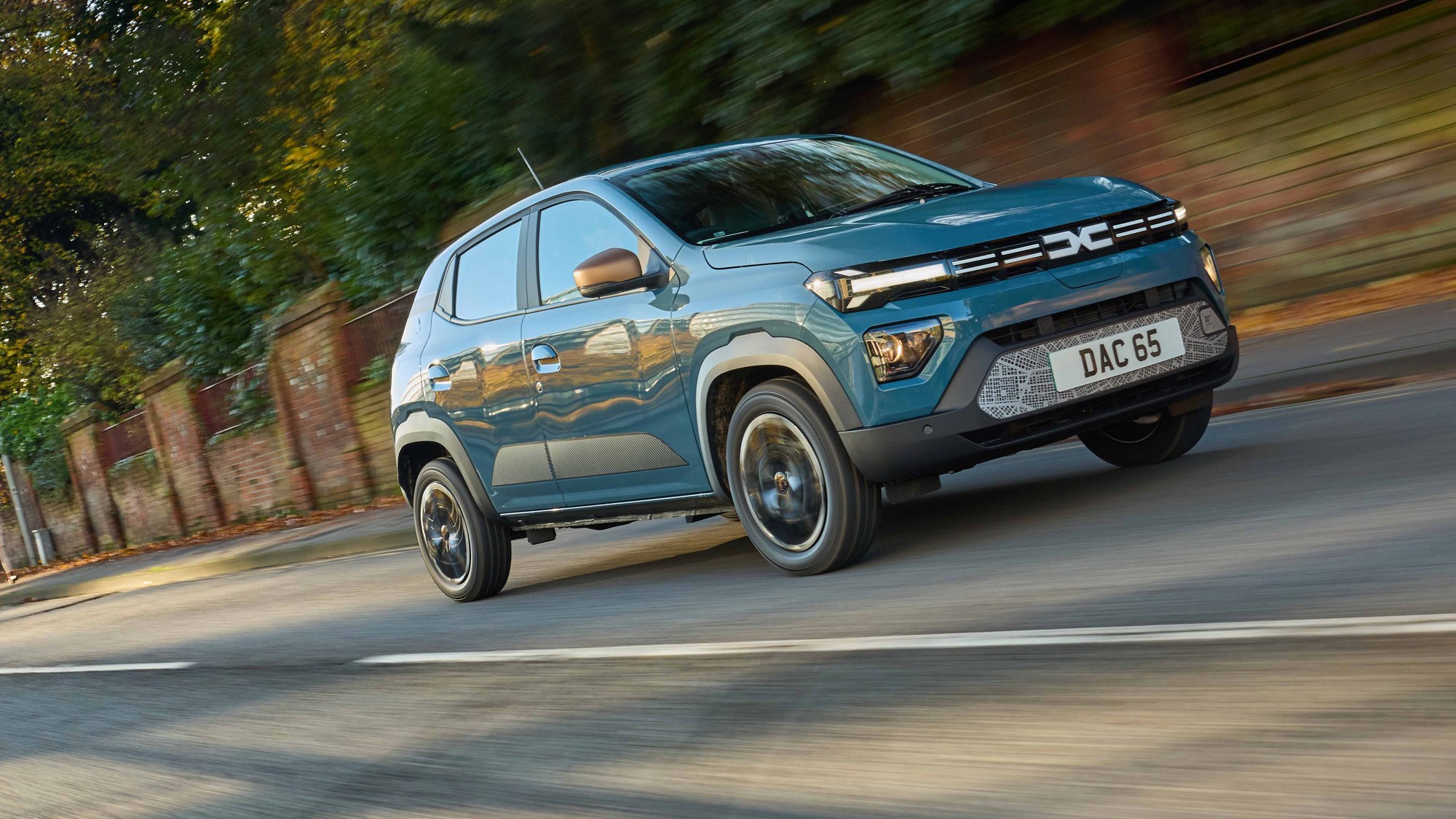
Sure, you’ll see some reports revelling in this handling behaviour – perhaps due to some romantic reminiscences of European car launch encounters with boggo 1990s French hatchbacks being lobbed down mountain roads by locals, door mirrors practically scraping the tarmac on every turn. And, yes, once you know what it’s going to do you can drive round it. Or even exaggerate it if you want your passengers to be sick.
But am I comfortable recommending a car with this kind of behaviour to a regular punter who wants a new set of wheels but is basically disinterested in driving? No I am not. The difference between this and now conventional modern motoring is just too, well, extreme.
What about the interior?
The interior is perhaps the Spring’s best feature, unless you were hoping to get adults in the back. And as long as you’re prepared to ignore how tinny the doors sound when they shut.
All models get a digital instrument cluster, real buttons for the climate control (remember those?) and a general ease of use that’s long been forgotten by many car makers. Base Expression versions – we say base, Dacia doesn’t sell the really bare-bones variant in the UK because nobody would buy it – don’t come with a central touchscreen but do have DAB radio and Bluetooth controlled via buttons on the steering wheel.
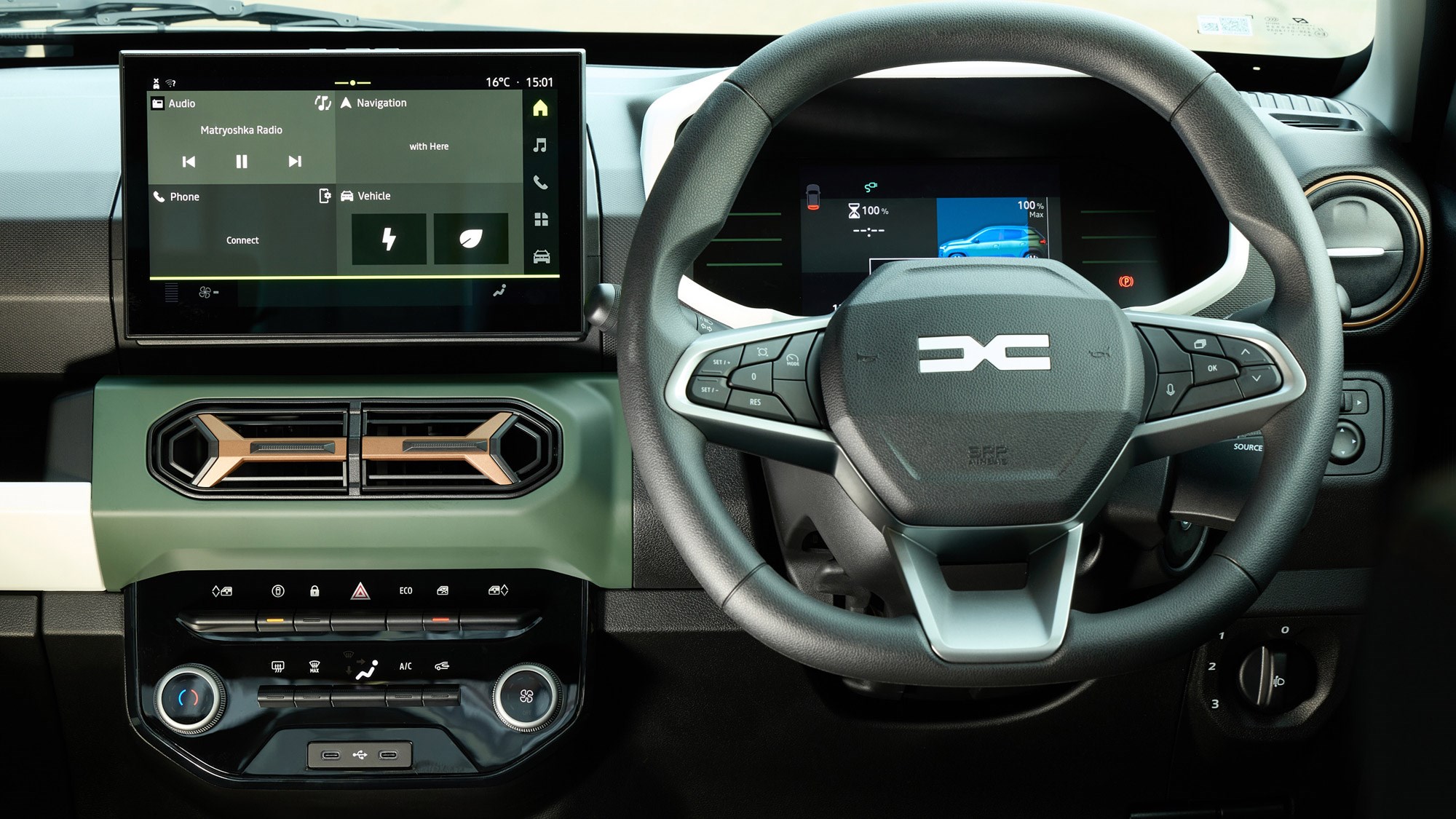
We’d skip this and go straight to the Extreme, which includes the 10.0-inch touchscreen out of the Duster. For the price, it works well, with basic connected services (though we found the in-built nav hopeless) alongside wireless Apple CarPlay and Android Auto.
Seats aside you won’t find any soft-touch materials, and even these have small bases and lack height adjustment for the driver. The cabin does get lots of interesting colours, shapes and simplicity, which come together to form an interior easily befitting a car costing more than the Spring does. We’re not so keen on the white top of the instrument cluster reflecting in the windscreen, though.
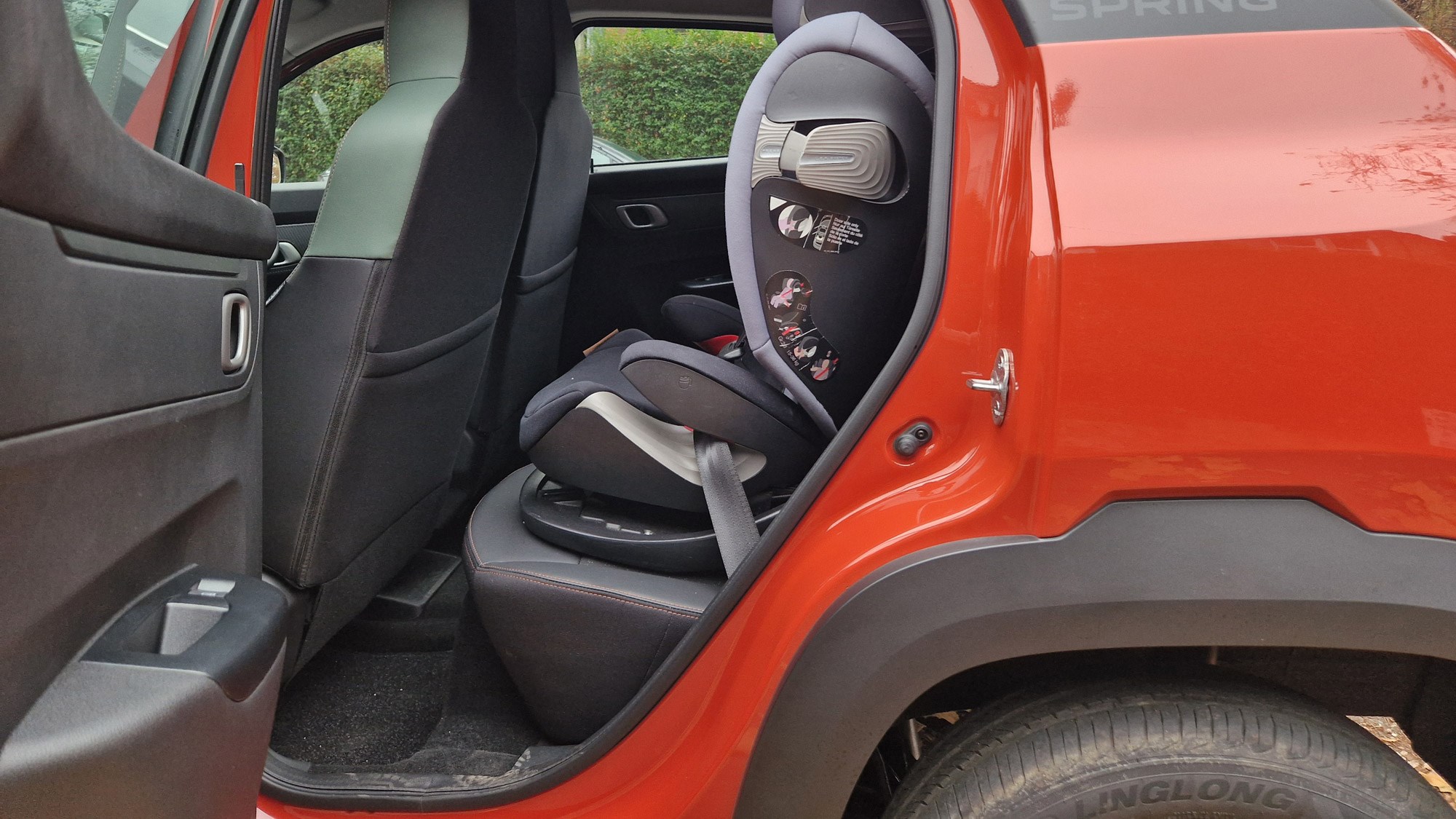
The Spring sits in the smallest A-segment or city car class. So it’s impressive that its 3.7m length – very slightly longer than a Hyundai i10 – includes room for nearly 33 litres of storage around the cabin and a 308-litre boot (the i10’s is 252 litres). However, at less than 1.8m wide including the door mirrors it is very narrow, and feels it inside. That Hyundai is over 17cm wider at the same point.
Rear legroom is very limited even if those in the front are prepared to compromise theirs. But headroom is plentiful and you’ll get a couple of large child seats inside without too much trouble where they’re easily attached to the Isofix mounts. The rear seat back folds forward to create 1085 litres of load space, but it doesn’t split, limiting that practicality. An additional storage space under the bonnet is optional.
Before you buy [trims and rivals]
We’ve covered the pricing, the choice of motors and much of the spec already. If you must buy one, the Extreme offers the best value, though at the time of writing the monthly leasing figures are quite a bit higher than they are for the 44bhp model.
Which is also notable because right now you can also get a Nissan Leaf on similar terms to that entry-level Dacia. And the Leaf has a five-star Euro NCAP rating (albeit from 2018), 148bhp and a 39kWh battery. However you plan to purchase, it will be absolutely worth checking the monthly finance figures against more sophisticated alternatives.
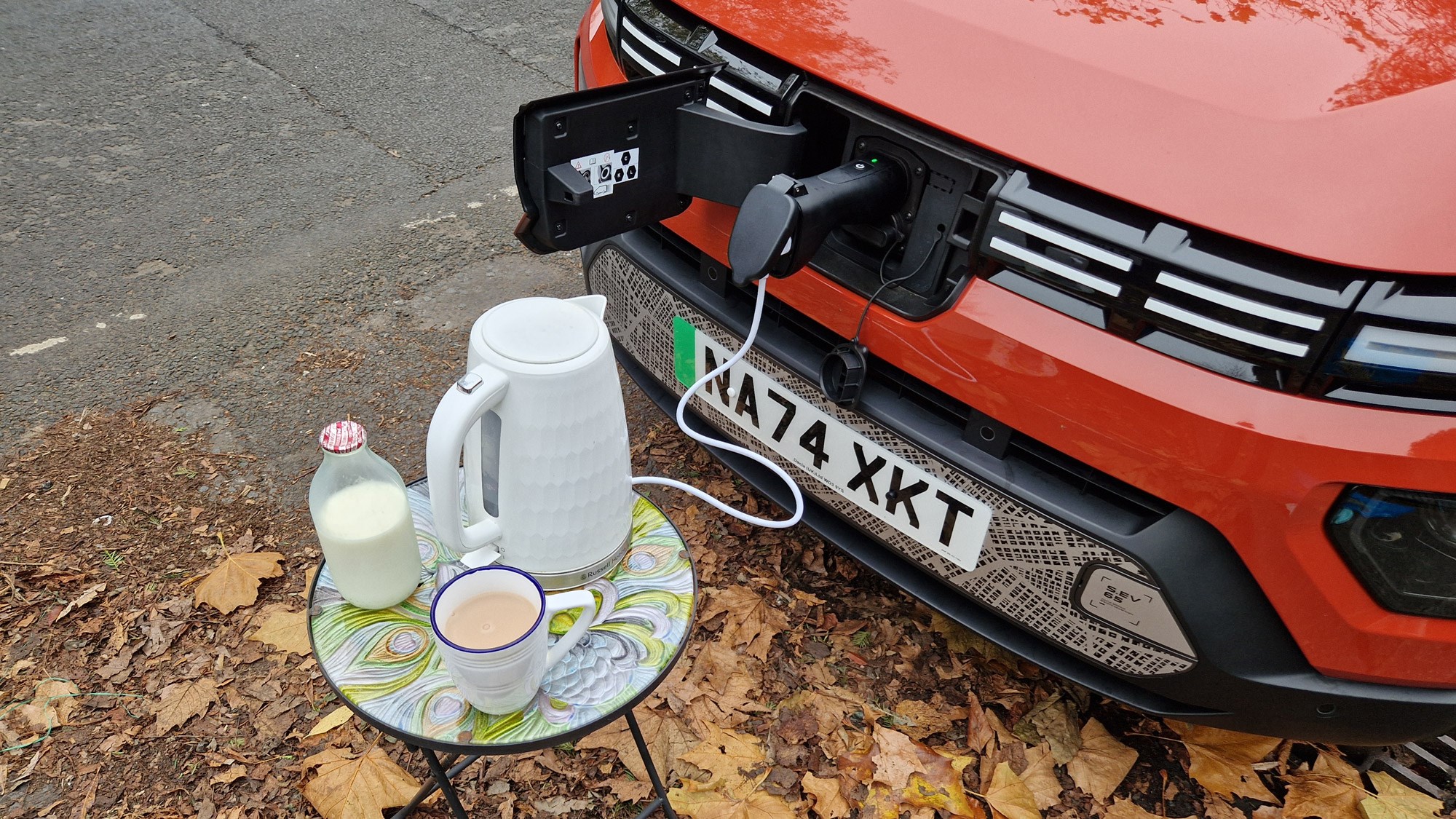
The nearest direct rival in terms of price as well as size is the Leapmotor T03, which we haven’t yet tested in the UK. The Fiat 500e is the only other electric city car at present, but you’ll pay much more for that – though it’s also a much better car.
Dacia has previously told us it benchmarked the Spring against used cars, citing the Nissan Leaf and Renault Zoe in particular. As such, there’s no reason we shouldn’t make similar comparisons. Problematically for the Spring, heavy depreciation on EVs means you won’t have to look far to find a choice of far more convincingly engineered year-old machinery with contemporary driving dynamics available for the same price as the Dacia. Corsa Electric, 500e, Peugeot e-208 – they’re all plentiful.
Verdict: Dacia Spring
Dacia has long led the way when it comes to value for money motoring, and we applaud it for that. The Spring, however – for this writer at least – feels like a step too far. If you want an electric car for around £15k there are many nearly new alternatives that will offer you a much better all-round experience than this one.
In the Spring’s favour it is easy to drive around town, where the light steering, tight turning circle and good visibility are all a boon. Dacia’s Zen warranty offer means you can get up to seven years of cover, too (if you’re happy getting serviced at the Dacia dealer). The 64bhp model is fast enough, and the driving range seems appropriate – there is no reason to fit a bigger, heavier and more resource-intensive battery pack to this kind of car.
But the budget tyres, the body roll, the generally insubstantial feel to the core build quality, and that one-star Euro NCAP performance all make the Dacia Spring hard to recommend.
Specs below are for the Dacia Spring Extreme